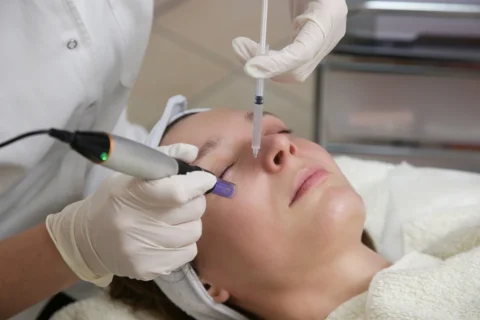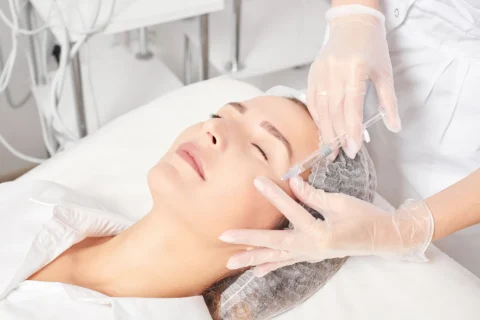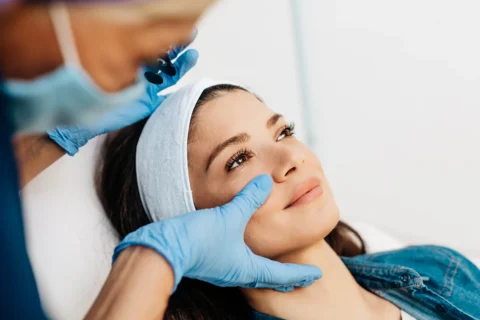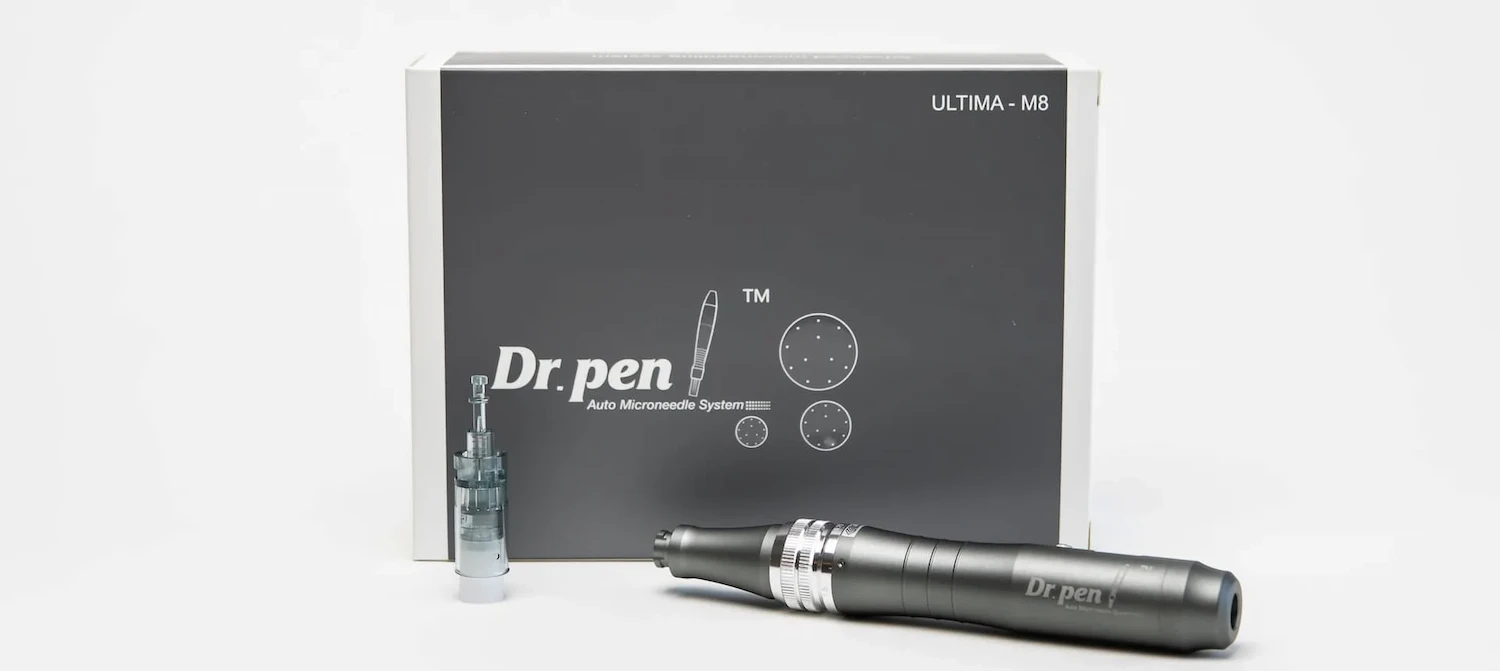Two Promising Non-Surgical Treatments for Hair Restoration
PDRN and PRP are two promising injection treatments that can stimulate hair regrowth for people experiencing hair loss. Both PDRN and PRP work by targeting hair follicles to help regenerate hair, but may differ in effectiveness depending on the individual and type of hair loss.
Hair loss is incredibly common, impacting up to 50% of men and women worldwide. The most prevalent form is androgenetic alopecia, also known as male or female pattern baldness. Other types include alopecia areata, telogen effluvium, and hair loss from medical treatments like chemotherapy.
Besides the aesthetic effects, losing hair can damage self-confidence and emotional wellbeing. People experiencing hair loss often feel self-conscious and anxious over their appearance. With wide-ranging personal and social implications, it’s understandable why effective hair regrowth treatments are highly sought after.
This article compares two prominent options for stimulating new hair growth: platelet-rich plasma (PRP) and polydeoxyribonucleotide (PDRN). Understanding their differences can aid in making an informed decision when pursuing hair regrowth treatments.
Restore your hair confidence and self-esteem with Face Med Store’s effective non-surgical hair regrowth solutions.
What is PDRN?
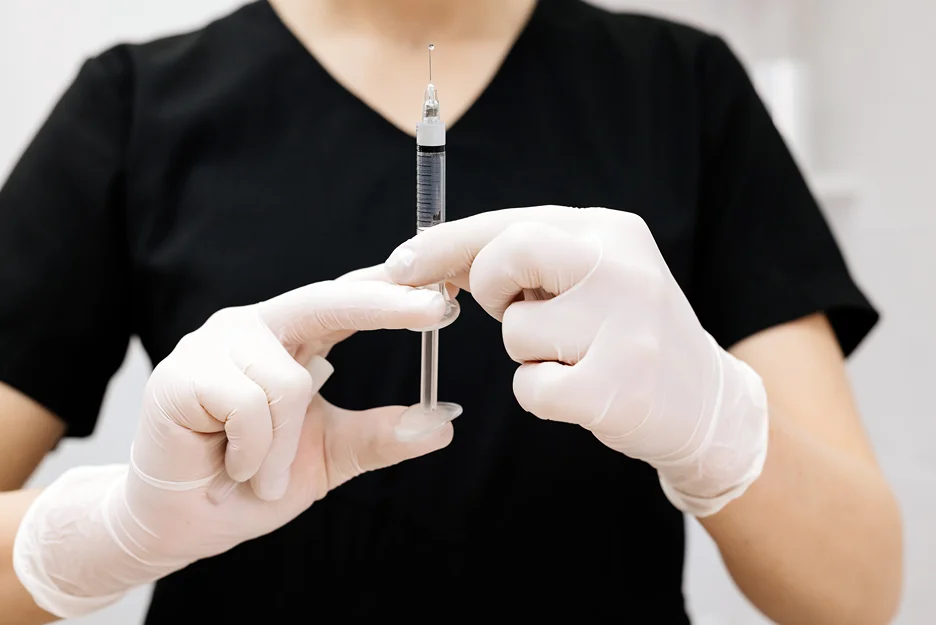
PDRN stands for “polydeoxyribonucleotide” and is classified as a regenerative injection treatment. Specifically, it contains DNA fragments sourced from salmon sperm. When introduced into tissues, PDRN is believed to assist with cellular repair and regeneration.
Research indicates PDRN injections can improve blood circulation and oxygen supply to tissues. This is thought to create an optimal environment for tissue revitalization and wound healing.
For hair regrowth, PDRN is injected into the scalp where thinning has occurred. It is hypothesized to counteract follicle miniaturization and damage by stimulating activity in stem cells located in the hair bulge. PDRN may also prolong the active growth phase of hair follicles.
Through these mechanisms, PDRN ultimately aims to stop hair fall and induce the regrowth of thicker, healthier hairs.
What is PRP?
Platelet-rich plasma, or PRP, is an injection treatment that utilizes a concentration of the patient’s own platelets. Platelets are blood cells vital for clotting, but also contain hundreds of growth factors and bioactive proteins.
To obtain PRP, a small amount of the patient’s blood is drawn and placed in a centrifuge. This isolates the platelet-rich fraction, which is then activated and injected into the scalp. The concentrated growth factors in PRP are believed to stimulate cellular regeneration and new blood vessel formation.
For hair regrowth, PRP is thought to target stem cells in the hair follicles and prolong the active growth phase. PRP may also improve blood flow to hair follicles and reduce DHT-induced damage. Ultimately the goal is reversing miniaturization of follicles to grow new, thick hairs.
PDRN vs PRP: A Side-by-Side Comparison
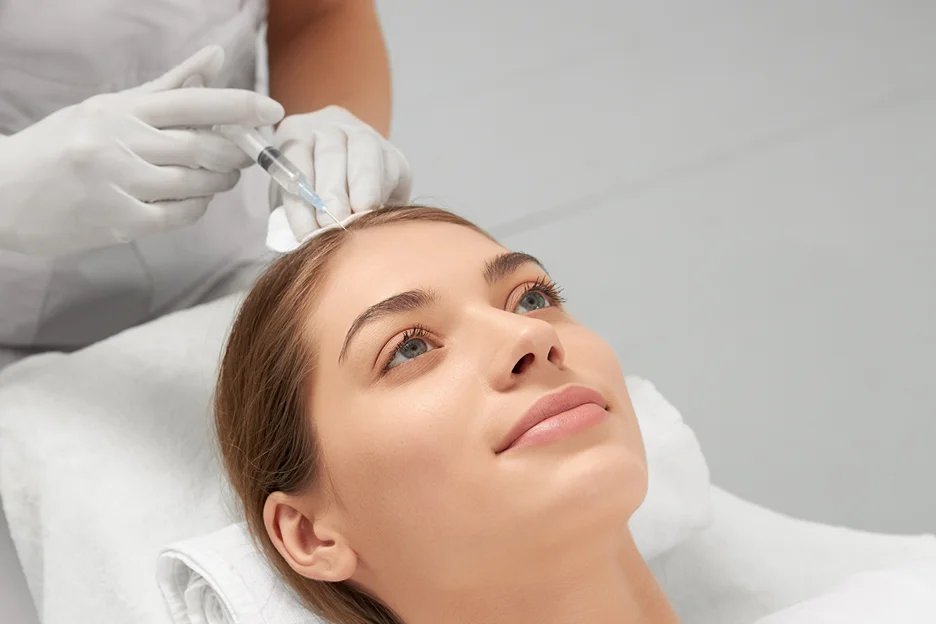
Here is an in-depth look at how PDRN and PRP stack up against one another across a number of factors:
Effectiveness
Several studies demonstrate PRP and PDRN can effectively stimulate hair regrowth. Smaller studies show PRP may have a slight edge in boosting hair density, while PDRN may promote thicker hairs. But individual variation can significantly sway outcomes.
The severity of hair loss, cause, and personal response to treatment all impact effectiveness. Consistency with follow-up treatments also influences long-term results.
Side Effects
Both PDRN and PRP are well-tolerated with minimal adverse events. Potential side effects include:
- Mild pain/discomfort during the injections
- Temporary redness, swelling, itching or bruising at the injection sites
- Headache, nausea, dizziness
These side effects usually resolve within a few days after treatment. Serious risks like bleeding and infection are rare when proper injection procedures are followed. Overall, both therapies are considered very safe with high tolerability.
Treatment Process
The process for receiving PDRN and PRP treatments share some similarities:
- Topical numbing cream or injected anesthesia is applied before injections to minimize discomfort.
- The scalp is cleaned and prepped where injections will be administered.
- Using thin needles, the solution is injected systemically into the scalp every 1 to 2 centimeters.
However, there are some differences as well:
- PRP utilizes the patient’s own blood, so a sample must be collected and processed before injections. PDRN does not require any blood draw.
- PRP protocols usually involve deeper injections across the entire scalp. PDRN can target only thinning areas.
- PRP sessions tend to involve more injections (up to 300-500 per session). PDRN may require only 100-200 injections.
Both procedures are generally completed within 30-60 minutes. Minimal downtime is expected, although some swelling or bruising can occur temporarily.
Cost
PDRN and PRP are considered relatively affordable, non-invasive hair restoration options. However, PRP tends to be more expensive with each treatment costing $500-$1500. PDRN costs range from $350-$850 per session.
Why the price difference?
Producing PRP requires specialized equipment and extra steps for blood centrifuging. PDRN involves directly injecting the prepared solution. The number of sessions required also impacts overall costs. Maintenance is recommended every 4-6 months for sustained results.
Make hair regrowth affordable through Face Med Store’s competitive pricing on PDRN. Contact us today
Suitability
When deciding between offering PDRN or PRP, carefully evaluate each patient’s specific case of hair loss. The type and extent of their hair loss will influence which treatment can provide more meaningful improvements.
- PRP may be better for those with sudden hair shedding like telogen effluvium, as it aims to shorten resting phases and stimulate growth.
- PDRN can help gradual thinning from androgenetic alopecia by regenerating hair stem cells.
Both may improve general scalp health, but work best for recent-onset hair loss. Those with advanced baldness or who are completely bald may not benefit from these treatments, but combining these with hair transplants can offer greater success.
Can You Combine PDRN and PRP for Hair Loss?
Emerging evidence indicates that pairing PDRN and PRP together may provide an additive boost to hair growth results compared to either treatment alone. This is likely because the two therapies target separate biological pathways involved in follicle regeneration.
Initial clinical findings demonstrate the potential of this combination approach. A recent study directly comparing combined PDRN/PRP versus PDRN monotherapy found that patients receiving both saw significantly greater improvements in hair thickness. While hair counts did not differ between groups, this provides early proof that the combo may enhance outcomes.
These synergistic effects can be attributed to the distinct mechanisms of each therapy:
- PRP supports regrowth through its regenerative properties and growth factor-mediated healing cascade.
- PDRN’s ability to stimulate cellular metabolism and blood flow appears to complement PRP’s effects.
However, larger scale clinical trials are still needed to confirm the advantages of combined treatment over individual therapies. While promising, the dual approach requires further investigation to validate its efficacy and safety profile.
Conclusion

In summary, while both PDRN and PRP offer promise for treating hair loss, robust comparative data is lacking to confirm superiority of one over the other. The choice depends largely on a careful assessment of each patient’s unique circumstances and goals.
Combining PDRN and PRP may elicit an enhanced response, though larger studies are needed to validate this synergistic effect. Consistent upkeep treatments and integrated modalities will help sustain improvements long-term.
Patients seeking solutions for distressing hair loss should be informed about these non-invasive medical options. However, as experts, our guidance remains crucial when creating customized treatment plans.
More rigorous research on PDRN, PRP, and combination protocols will further direct clinical use. But the progress made highlights the exciting potential of harnessing regenerative therapies. We can expect continued innovation in effectively addressing different forms of hair loss.
As leading providers, staying current on the rapidly evolving landscape of hair restoration is key to optimizing patient outcomes.
